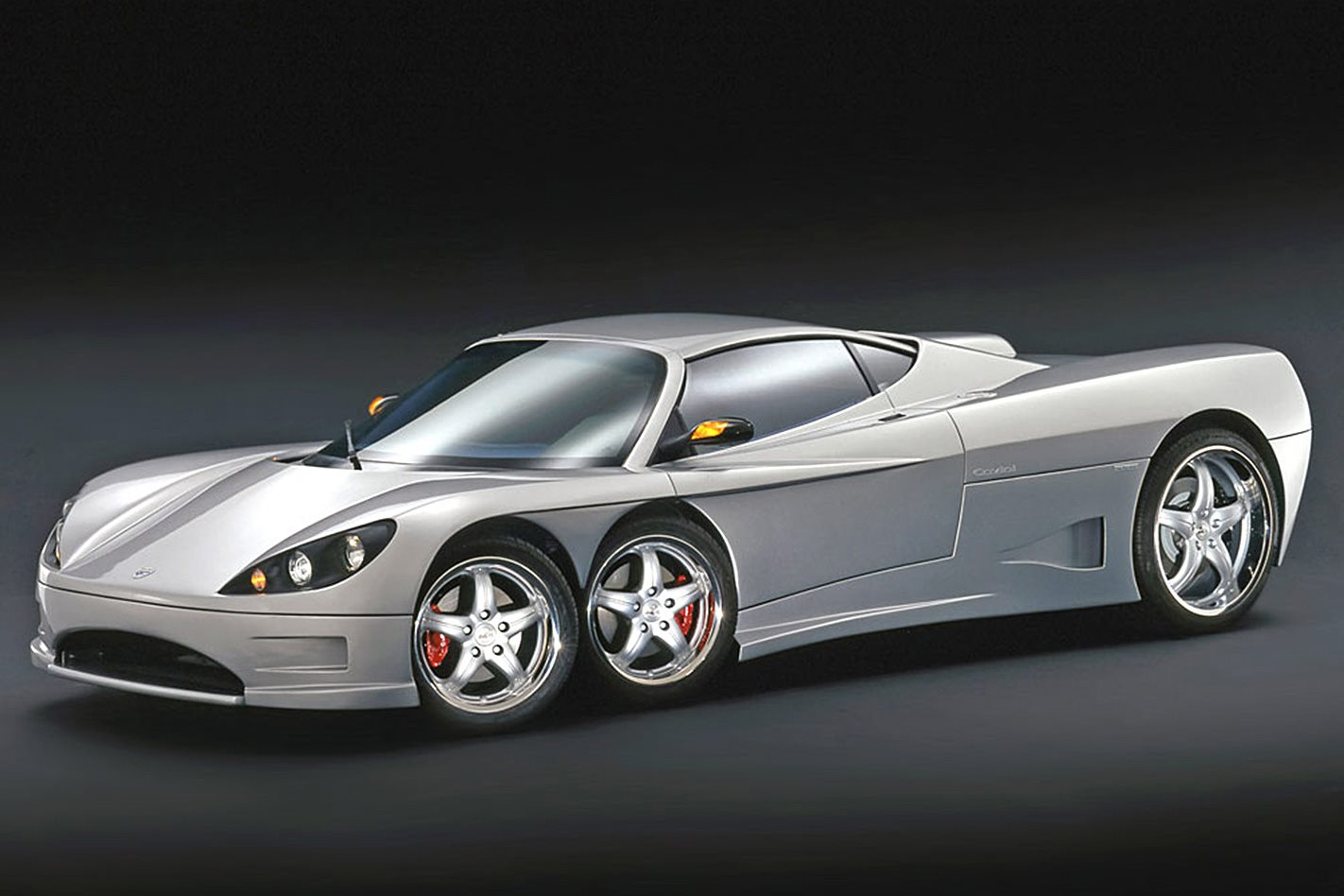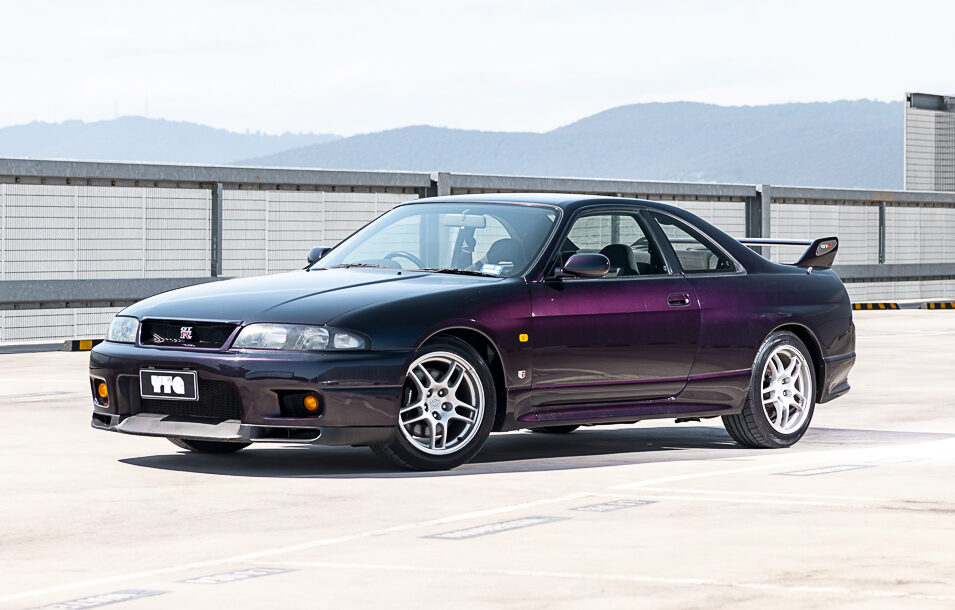Outrageous speedsters bound to raise a smile.
First published in the September 2014 issue of Wheels magazine, Australia’s most experienced and most trusted car magazine since 1953.
Lykan Hypersport
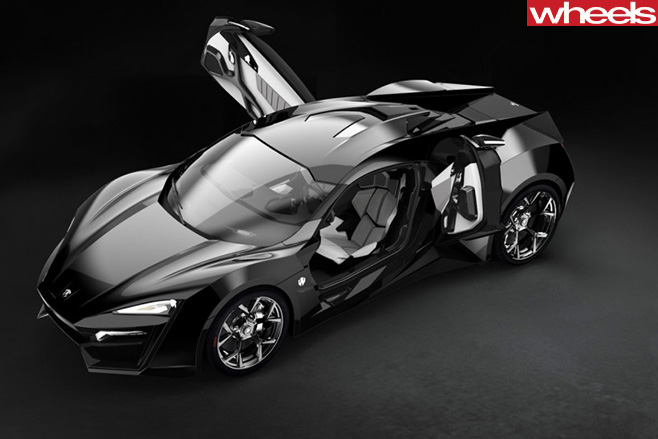
The Lykan HyperSport might not be the most expensive car in the world – it’s a million bucks cheaper than the Lamborghini Veneno, only three of which were made – but it’s certainly the most expensive car you’ve never heard of. A pre-production example was revealed at the Dubai Motor Show last November and production has been capped at a giddy seven units to ensure exclusivity.
If you think the price is steep, bear in mind that things you might consider to be options come as standard. Mark my words, this car has features that will be considered must-haves in years to come.
For example, this is the first car with diamonds embedded in its headlights. No fewer than 420 of them, amounting to 15 carats, and you can even select what you want – rubies, diamonds, yellow diamonds or sapphires. Better be careful where (and how) you park, though.
Then there’s the gold-stitched leather, the gold-plated bonnet and more diamonds in the “holographic” interior. They even throw in a limited-edition watch worth $200,000.
But don’t think it’s all show and no go. A twin-turbo RUF-tuned 3.7-litre Porsche flat-six pumps out 552kW/960Nm and 0-100km/h is said to take just 2.8 seconds.
Why we love it Well, we don’t really, but those potential buyers who love a bit of bling certainly will.
Why we laugh An astronomical price for a car with absolutely no brand value; the bling comes as standard.
Splinter
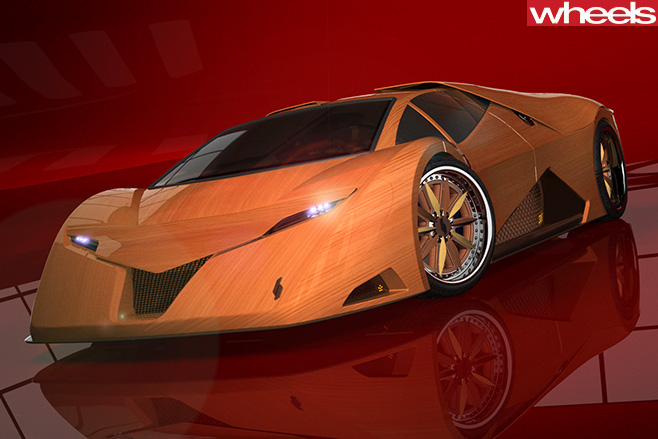
The Splinter – a wonderfully self-deprecating name if ever we heard one – is the brainchild of Joe Harmon, who in 2006 was a 28-year-old industrial design student in North Carolina.
Joe “wanted to show that wood isn’t an antiquated, low-technology material”, so he set about building a wood supercar for his masters thesis. Of course, like all car projects, it quickly got out of hand.
Joe charged ahead with what could only be described as missionary zeal. He took basket-weaving lessons to learn how to weave the seats, invented a wood veneer cloth to use instead of fibreglass or carbonfibre, designed special looms and invented a way of producing wooden wheels that are not only massively strong, but look good.
For the record, the car is almost complete, weighs just 1134kg and is powered by a Northstar supercharged 4.6-litre V8 developing 450kW, with an old-school Indy-style spaghetti exhaust on top to get heat away. Theoretically, it will accelerate to 100km/h in about three seconds.
All sorts of wood were chosen for different applications – oak for the wheels, hickory for the tie rods, Osage orange for the leaf springs. It’s all hugely impressive and elegant. What a shame that former Lotus engineer Frank Costin, who proclaimed wood as “God’s own composite”, isn’t around to see the Splinter.
Why we love it Built with real passion and craftsmanship; one man’s utter obsession with attention to detail.
Why we laugh It’s a car that is made almost entirely from wood! And it’s not a Morgan either.
Cizeta V16t
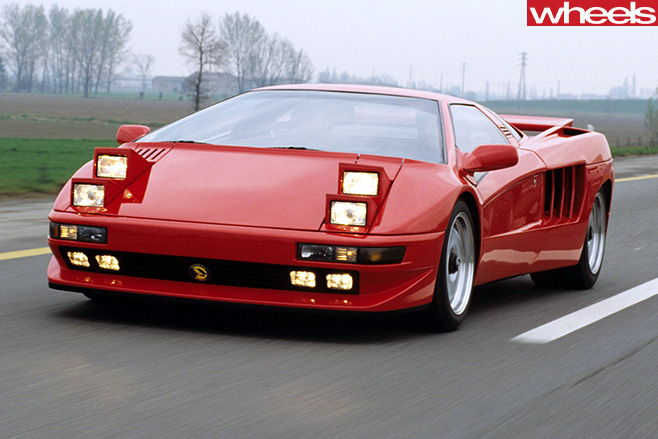
Both cars were penned by Italian maestro Marcello Gandini, who may have defined your childhood. Remember that poster in your bedroom – no, not the one of Farrah Fawcett, the Lamborghini Countach one – he designed it. He also designed the Miura, the Diablo and the Lancia Stratos, any one of which would be any designer’s career highlight.
However, Gandini was so incensed when the lines of his original Diablo were softened under new Lambo owner Chrysler that he went off in a huff and built his own, with the help of a couple of Italian mates. Those mates were Ferrari dealer Claudio Zampolli – whose initials are pronounced “Cizeta” – and world famous music producer Giorgio Moroder, creator of such classics as Donna Summer’s Love To Love You Baby, Irene Cara’s What A Feelin’ and the film soundtracks for Midnight Express and Top Gun. Although the Oscar-winning producer quit the project soon after the car debuted in 1991, he did design the badge, for which he won an award in the US.
Aside from its distinctive quadruple pop-up headlights, what really made the Cizeta stand apart was its incredible 403kW/542Nm 6.0-litre V16 engine, formed by joining two Ferrari V8s on a single flat-plane crank. About 15 cars were built in Modena up to 1995, when Zampolli moved to the US and continued to build them to order for $US800,000.
Why we love it It’s what the Lamborghini Diablo may have ended up looking like if one man had his way.
Why we laugh Two Ferrari V8s joined together; imagine having to rely on those Italian-designed pop-up lights.
Jaguar XJR-15

When was conceived in the late 1980s, supercar mania was at its pre-recession peak and Jaguar – despite only producing the XJ40 and XJS luxo barges – was basking in the glory of Le Mans glory thanks to Scottish bulldog Tom Walkinshaw. So Jaguar jumped at Uncle Tom’s idea of producing a road version of the incredible racecar.
The car looked a million dollars, so that’s the price Jaguar stuck on it. And that’s in 1991 dollars. Trouble is it didn’t go like a million bucks. That big 6.0-litre V12 sounded glorious, but 336kW couldn’t match a Ferrari F40’s 356kW, which cost half as much.
Fifty cars were built and most were parked immediately to appreciate in value (which of course they didn’t).
Jaguar somehow convinced 16 owners to put their million-dollar cars in the hands of professional racers in a three-race series supporting F1 races. The drivers soon discovered the handling was spooky – a higher ride height ruined the aero and suspension – and not even the inevitable carnage attracted much public interest.
Finally, to spice things up, Jaguar offered a $1 million prize for the final race winner at Spa. When the drivers started doing deals with one another to snare the prize, Jaguar refused to tell them when the chequered flag would come out. A suitably farcical note on which to finish.
Why we love it That smooth Peter Stevens-designed bodywork looks like it was melted on.
Why we laugh Twice the price of an F40, half the performance, handling, collectability and prestige.
Vector W8
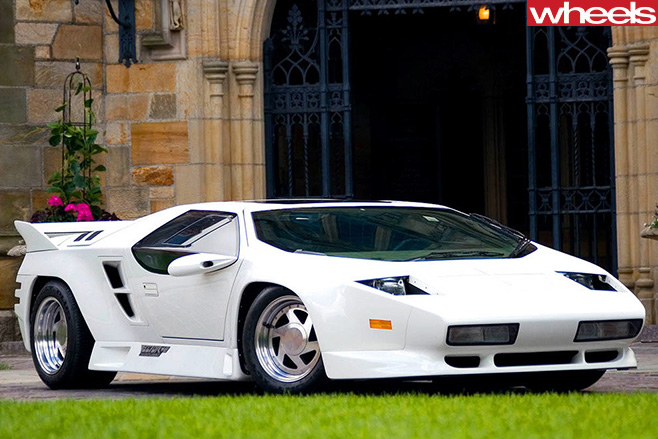
What really defines Vector, though, is the Hot Wheels styling of what turned out to be its most popular model – they built 17 – the W8 of the early 1990s, when supercars ruled the earth. Before the foreclosures and Wall Street swan-dives.
Outrageous as the W8’s styling was, it was matched by the engine, a 6.0-litre Chevy V8 with twin turbochargers that on its regular eight pounds of boost produced some 485kW and 880Nm. But that was just to keep the insurance companies happy. The boost was adjustable and could be screwed up to 14lb, at which point dyno testing indicated as much as 900kW, possibly moments before the room was splattered by small pieces of Detroit iron.
Tennis star Andre Agassi – surely the archetypal W8 owner – plonked down $455,000 for the first production model and demanded delivery pronto. But the car still wasn’t fully developed and broke down, resulting in lots of bad publicity for Vector before it finally took the car back and refunded the once-flamboyant Las Vegas playboy.
Now, after the inevitable financial dramas, takeovers and buy-backs, founder Gerald Wiegart is back in charge and developing an even wilder Vector with a twin-turbo 10.0-litre big-block V8 producing 1500kW. We just hope they’ve found a wind-tunnel in California.
Why we love it What boy wouldn’t want a real-life Hot Wheels car? Just hope the axle doesn’t bend.
Why we laugh 400km/h in a car that looks like it was designed on the back of a napkin at Burger King.
Koenigsegg One:1

Yes, it’s full-size. And mega.
You can’t argue with them. The One:1 has a twin-turbo version of Koenigsegg’s own 5.0-litre aluminium V8 that produces some 1000kW of power, making it the first production car in the world to be rated at one megawatt. You see, it really is mega.
There’s also a load of torque available – some 1371Nm of it, with more than 1000Nm available from 3000rpm all the way through to 8000rpm. Good for towing the caravan, then.
We’d like to tell you how fast it accelerates from 0-100km/h, but we suspect it’s too quick to measure because Koenigsegg doesn’t quote a figure. What they do say is it will go from rest to 400km/h – yikes! – in about 20 seconds. And back to zero in another 10 seconds. From 100km/h, it stops in just 28 metres.
But it doesn’t stop accelerating at a mere four ton. It hasn’t been proven yet, but the One:1 is expected to top 440km/h, which would make it the fastest production car in the world. What a pity they’re only producing six, and most will go to China, where apparently they can still afford $2.4 million megacars.
We should also explain that the car’s name doesn’t really relate to its size, but its power-to-weight ratio of one horsepower per kilogram. That’s so extraordinary we’ll forgive them the mixed imperial/metric measurements.
Why we love it It runs on E85, so no need to think you’re an environmental terrorist as you roar to 440km/h.
Why we laugh Its 1 megawatt output; the power of a horse for every kilo of weight. Imagine that!
Covini C6w

Ferruccio Covini is an Italian engineer who has been building cars since 1978, and before he started producing quirky diesel-powered 4x4s and sports cars, he had been inspired by the famed Tyrrell P34 six-wheeler that turned Formula One on its head in the mid-70s.
Future world champion Jody Scheckter snagged an historic Grand Prix win in the publicity grabbing Tyrrell six-wheeler, but more sophisticated aerodynamics and tyre technology overtook its theoretical advances and none of the other teams followed the trend.
But Covini never forgot his dream and in 2003 – obviously tired of sanity – revived his six-wheeler project, which had lain dormant since the ’80s due to a lack of suitably low-profile tyres for the proposed Tyrrell-style 10-inch wheels. He built a prototype, now with regular 16-inch fronts, improved it and in 2005 put the car into limited production, fitted with an Audi 4.2-litre V8 developing 324kW and 470Nm.
We’ve driven Lambos and the like where the wheel-wells push your legs into uncomfortable positions, so we reckon it would help to be literally legless in this thing. And heaven knows what the turning circle is like. Still, it scores top marks for novelty value, even among this lot.
Why we love it Two extra brakes; no need to stop for a puncture; no chance of being upstaged.
Why we laugh Holding on to a bad idea; just look at the thing: it’s got six freakin’ wheels! We can’t stop laughing.
Tramontana R
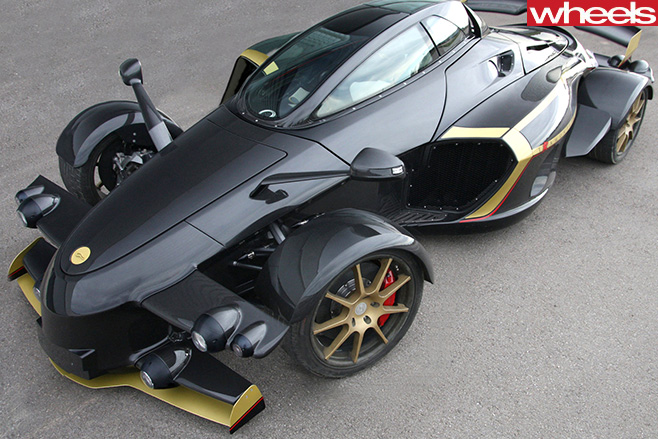
After looking at this car, you should not be surprised that Josep – who studied at the Royal College of Art in London – was offered a job designing for the Star Wars movies in the US, but turned them down to concentrate on making cars. Yeah, we like Josep.
The first version of the Tramontana in 2005 arrived on the back of Fernando Alonso mania in Spain, and it looked even more like a Formula One car, having an open top, but in 2009 Rubau produced this R Edition with a canopy roof that clinched the jet fighter look.
If you would expect a little turbo four slotted in the back of the carbonfibre tub, forget it. There’s a monster Mercedes-sourced 5.5-litre twin-turbo V12 wedged in there, pumping 537kW and a crazy 1100Nm through a six-speed sequential ’box to the rear wheels. With a kerb weight of 1268kg, that’s enough to send this Eurofighter to 100km/h in 3.6 seconds.
Josep builds about a dozen cars a year, with a base price of around $700,000, but be careful when approaching the options list. Tick the boxes for silver wiring, gold badges and fittings, or a diamond-encrusted interior and you’ll quickly crack a million. And that’s real dollars, not pesos or goat futures or whatever they deal with in Spain these days.
Why we love it It looks like a fighter jet; costs ‘only’ about $700,000 if you avoid the tempting options.
Why we laugh You just don’t want your missus sitting in a seat behind you; not for claustrophobics.
Rimac Concept One

Not that this is an ordinary electric car for beetling down to the supermarket. Oh no, this one produces … wait for it … 800kW and 1600Nm (from 0 to 6500rpm). And that’s enough to send it screaming – well, humming, if we’re honest – to 100km/h in just 2.8 seconds.
This remarkable supercar was built in Croatia of all places, on the outskirts of Zagreb, and made its public debut three years ago at the Frankfurt motor show, where it went largely overlooked under the weight of attention directed at the world’s car-making heavyweights.
Finally, there’s now a production plan for this amazing car, starting next year.
In the meantime, here are a few more facts for you: dry weight 1950kg, four electric motors (one for each wheel), 92kWh of energy in the batteries, 600km of range. There’s a lot going on under that full carbonfibre body and chassis.
And the interior was designed by a bunch of former Pininfarina artisans from Italy, so that can’t be bad.
And who’s that bloke we mentioned called Mate? That’s company founder Mate Rimac, who not only believes that the electric motor is better than the internal combustion engine, “especially for a sports car”, but still uses his battered old BMW 3 Series as a test mule, and to set the occasional speed record. Good onya Mate.
GTA Spano
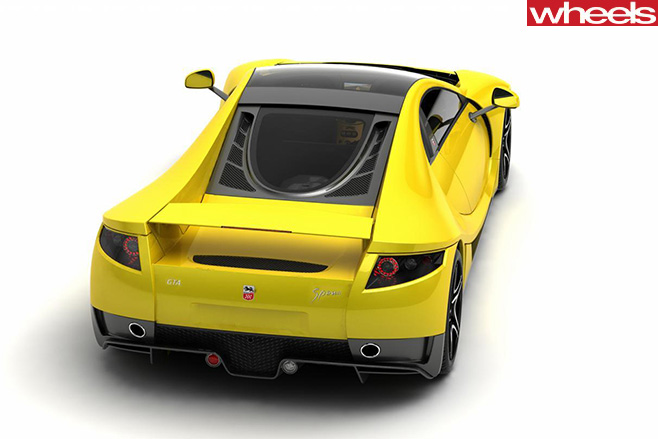
Mind you, it’s not any old truck engine from a Kenworth. This is the 8.3-litre V10 that Dodge crams under the bonnet of its muscly Viper sports car and, while it was indeed fitted to the Ram pick-up, it was developed with the help of Lamborghini in the late 1980s when Chrysler owned Lambo. So it does have Italian supercar breeding.
Not that Spano Motor was happy just to have breeding. It wanted grunt, and plenty of it. So it fitted a supercharger to the mighty V10 so that power soared to 580kW – 625kW when slurping the higher-octane ethanol fuel for which it’s tuned – and torque peaked at a massive 920Nm.
With an ultra-strong chassis made from Kevlar, carbonfibre and titanium, the 1350kg Spano GTA accelerates like a cut cat. When it was launched in 2009, the company claimed the GTA was one of the five quickest cars in the world, with a 0-100km/h sprint time of only 2.9 seconds.
But Spano has tried to keep it user-friendly as well, employing its motorsport experience to develop an engine management system that feeds the power in progressively, and an active suspension system that raises the car 80mm to get over speed humps. It even has a tight 10.8-metre turning circle. Pity the $1m price tag isn’t so friendly.
Why we love it Scintillating performance and smart technology from an unknown, upstart car maker.
Why we laugh A supercharged truck engine in a slinky supercar; $1m price tag with no brand value.
Frazer-Nash Namir
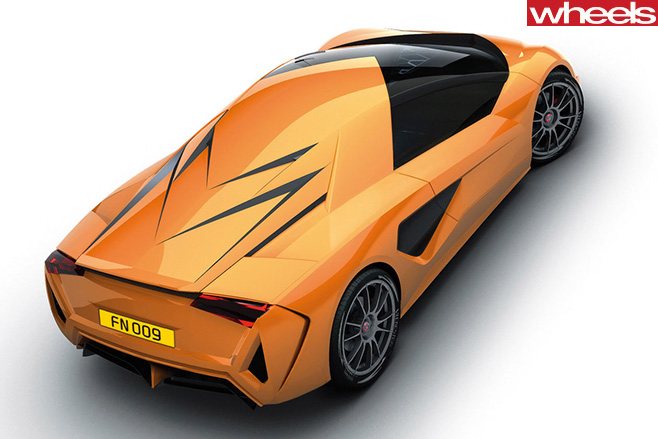
Just one look and it’s clear this car is not British. There’s not a whiff of leather patches or chain-drive as there was with the original Fraser-Nash. And that’s hardly surprising when you learn that the car was produced in Italy, by none other than famed design house Italdesign Giugiaro. Surely those sharp lines – inspired by the diamond-shaped Frazer-Nash logo – could only have come out of Turin.
But this is not all Italian supercar fantasy. And it’s not just reviving an old name for nostalgia’s sake. It was produced in conjunction with Frazer-Nash Research, a company that traces its roots back to the original firm and for a quarter of a century has been at the forefront of electric drivetrain development for hybrid cars and mass transit systems.
And so the Namir – an Arabian name meaning tiger – has a drivetrain that is a little bit different to the average hybrid, let alone the average supercar. In addition to a powerful electric motor for each wheel, it has an 814cc rotary engine that acts as a generator. And that’s enough to propel the sharply styled Namir from rest to 100km/h in just 3.5 seconds while using less fuel than a Smart city car.
Jolly good show.
KTM X-Bow
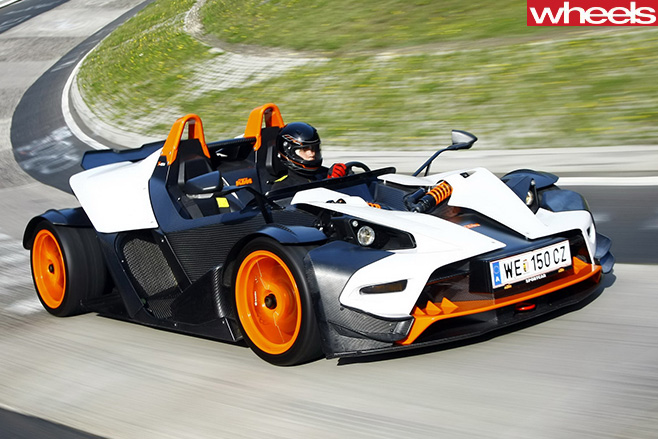
To be fair, it is finished. And we have to admit it’s just a little bit brilliant. In fact, it’s been so well received since KTM showed the prototype at the 2008 Geneva motor show that the company had to increase production from 100 to 500 units a year, then to 1000, and even build a new plant near Graz to meet the high demand. That represents a nice little earner for the Austrian motorcycle maker, not to mention racing car company Dallara, which helped engineer the car and produces the carbonfibre tubs in Italy.
Light weight, of course, is the key to the X-Bow (pronounced “crossbow”). It weighs just 790kg – that’s 62kg less than the lightest Lotus Elise and about half the weight of a Gallardo Spyder – so it doesn’t need massive horsepower. Even with the base 2.0-litre turbo producing only 177kW and 310Nm, the 6-speed manual screams from 0-100km/h in just 3.9 seconds. With the ‘R’ model’s more powerful 224kW/400Nm version of the Audi-produced engine – it also appears in the VW Golf GTI – and the even more track-focussed ‘RR’, it’s even quicker again. But KTM won’t say how much. Spoil sports.
Sadly, while the X-Bow can be registered to be driven on the road in Europe, local authorities won’t allow it. So, despite being offered Down Under all too briefly for $119,500, you won’t see any on Australian roads.
Why we love it Zero to 100km/h in less than four seconds for about $100K. That’s pretty good value.
Why we laugh Stupid bike company… it looks someone forgot to put a body on the thing before it went on sale.

